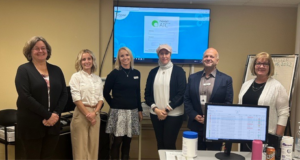This article was written by Mary Ward for The Sydney Morning Herald. Published September 18, 2022. To access the original article, click here.
A record number of people in NSW are waiting longer than clinically recommended for elective surgery, as surgeons trial shorter hospital stays for some procedures.
There were more than 18,700 people overdue for surgery at the state’s public hospitals by June, according to the Bureau of Health Information’s quarterly report released this week, nine times more than before the Delta lockdown last year.
The waitlist included more than 1500 people who had waited over a year for a total knee replacement, and more than 600 waiting the same time for a total hip replacement. Cataract surgery had the largest number of patients waiting longer than clinically recommended, with more than 2400 people overdue.
Of the procedures completed between April and June, one in 10 patients recommended to wait less than a year had waited more than 16 months. Wait times in the more serious semi-urgent category – which includes procedures such as heart valve replacements or fracture treatment – were also longer, with one in 10 people waiting more than five months for surgery meant to occur within 90 days.
An extra 80,000 people were waiting for elective surgery by the end of June but were not yet overdue. Overall, the elective surgery waitlist declined by about 2300 patients between March and June.
Some doctors have expressed scepticism about the waitlist figures, warning long wait times to see specialists and GPs likely mean they are a significant under-estimate.
“They’re not being added because they are not being seen,” said Dr Michael Bonning, NSW president of the Australian Medical Association.
Professor Ashish Agar, president of the Australian Society of Ophthalmologists and Associate Professor Michelle Atkinson, NSW chair of the Royal Australasian College of Surgeons, agreed the waitlists needed to be reviewed.
“There are people who’ve waited for two years for a knee replacement: maybe they need to be made more urgent, or maybe they now need another intervention,” said Atkinson, an orthopaedic surgeon.
“We are seeing people in ED who have waited so long that they have progressed to needing acute management,” said Dr Clare Skinner, president of the Australasian College for Emergency Medicine. For example, someone who was waiting for gallbladder surgery may now have gallstones and be presenting in immense pain in the emergency.
The bureau’s report showed people attending hospital during the April to June quarter were sicker than in previous years, with an uptick in people attending emergency departments triaged as life-threatening cases and an increase in the average length of hospital stays.
NSW Health deputy secretary, Adjunct Professor Matthew Daly, said the waitlists were within the ministry’s expectations following the shutdowns, noting 98 per cent of urgent elective surgeries were performed on time during the quarter.
“We can really only count patients who present for treatment,” he said of the wait lists.
This year’s state budget included a $408 million package to reduce elective surgery wait times, including funding for 267 full-time equivalent staff to complete more procedures at hospitals, including on weekends.
A NSW Health spokesperson said local health districts were currently addressing their elective surgery backlogs by increasing bed capacity in hospitals where possible and ensuring all available clinical staff are deployed to the care areas with the highest demand, as well as transferring or redirecting patients to other hospitals, including private hospitals, where necessary.
“NSW Health acknowledges there is still more work to do to address the significant impact the pandemic response has had on our waiting lists,” it said.
The spokesperson said hospital in the home services were being “explored and leveraged where appropriate” for rehabilitation without use of a hospital bed.
Some hospitals have also moved to same-day joint replacement surgery, using the ERAS (Enhanced Recovery After Surgery) method, which is increasingly popular in the US. The method involves small interventions before and after surgery, as well as a preference for minimally invasive surgery techniques, to have patients up and moving soon after their procedure, before recovering at home.
Sydney orthopaedic surgeon Associate Professor Sol Qurashi recently conducted a small trial demonstrating certain patients could receive total hip and knee replacements and be discharged from hospital within 24 hours with similar outcomes to those who had conventional stays, with less need for inpatient rehab and no increase in adverse events.
“The right patient is someone who is generally fit, has good family support and is motivated,” Qurashi said.
His research, published in the Royal Australasian College of Surgeons’ research journal, estimates the approach could save $15,000 per patient, meaning a total saving of $279 million over two years if NSW was to use the technique in a third of its public hip and knee replacement surgeries.
“It is not a new technique, but it is very timely given the circumstances created over the past couple of years,” he added.
Anja Minney, 59, tore her meniscus five years ago and her knee never recovered. While she had her reconstruction in the private system under Qurashi earlier this year, she said the public waitlist for so-called “elective” surgery was unbelievable.
“Before the surgery I couldn’t garden anymore, doing the groceries was a chore. I couldn’t do stairs,” she said. “It’s not like cosmetic surgery. It’s something I needed to have done, so I could progress on with my life.”



